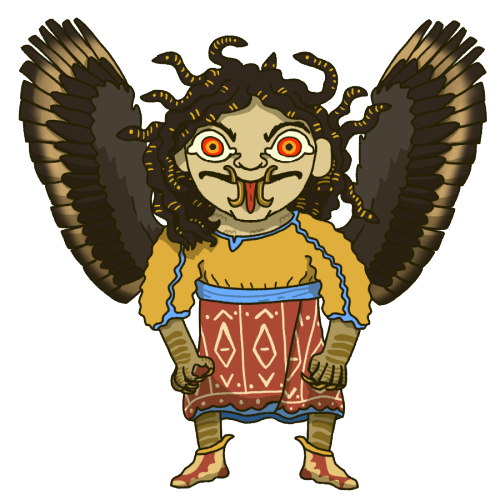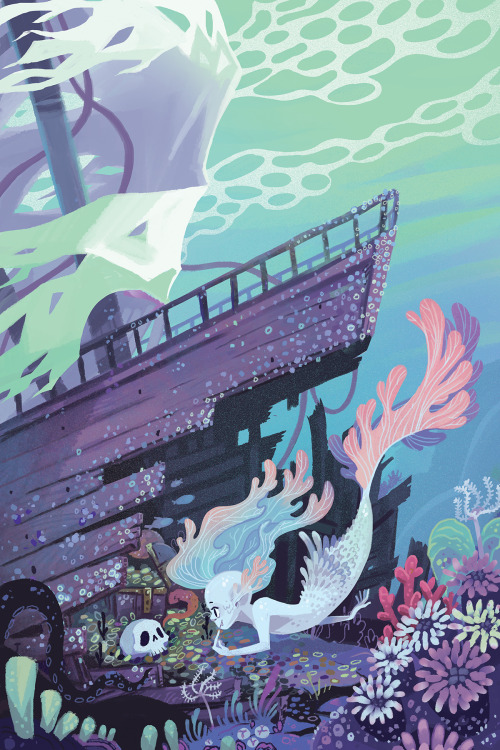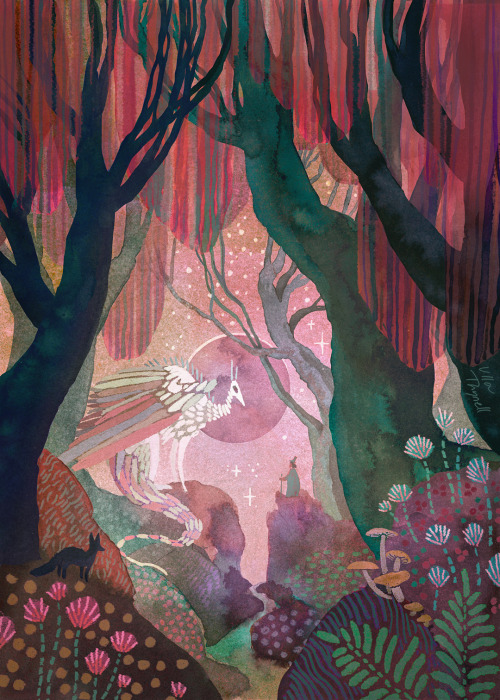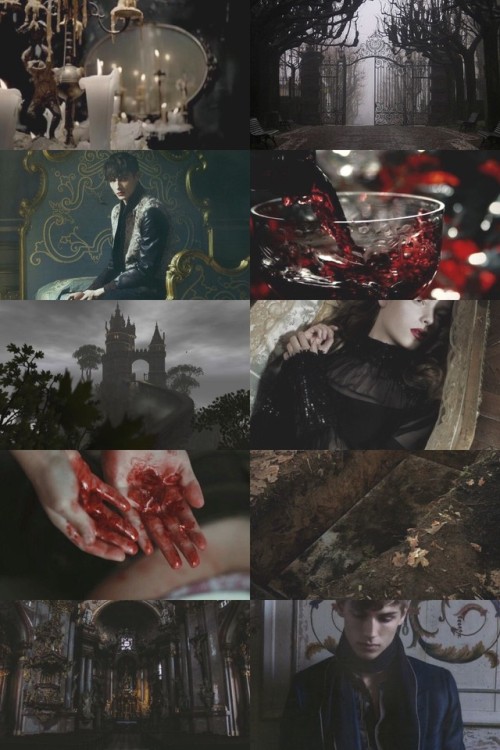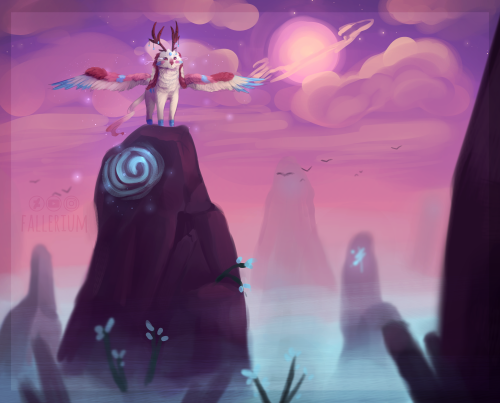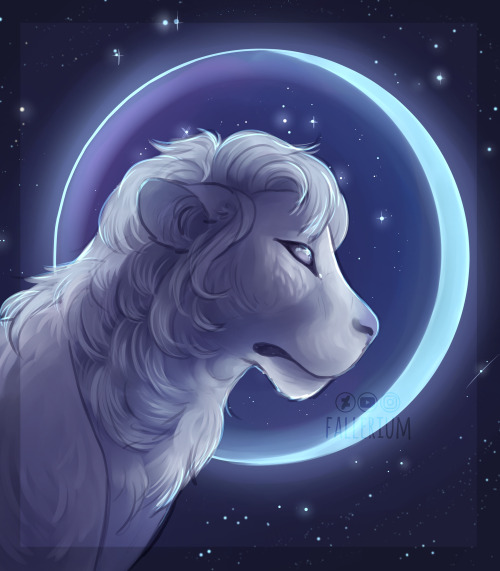#mythical creatures
Probably the most famous monster from Greek Mythology is Medusa. Her name has overshadowed that of all other gorgons, to the point where species meant to represent gorgons are just called “medusas”. Across the years, gorgons have changed considerably. While, to my knowledge, there is no exact origin for the monsters, I would hazard a guess that the gorgoneion predates them. The gorgoneion is an apotropaic symbol of a wide, ugly head, sometimes with a beard or tusks, but always with a lolling tongue, curly hair, and wide eyes. Like the evil eye in the modern Mediterranean, the gorgoneion was used as a ward for evil. It was supposed to be so hideous that demons and men alike would cringe in fear when they saw it.
The symbol then evolved into a monster (and in Arkadia was given to Demeter in her wrathful form). Its ability to inspire paralysis with fear was exaggerated into a petrifying gaze. The rest of the gorgon’s body was a bit harder to piece together. For most of history it was just a head. A humanoid head, so obviously it was humanoid, right? Well, one archaic image of Medusa (which we can surmise is Medusa because Perseus is right next to her) shows her with a centaur-like body. After that though, the general consensus became that gorgons had human bodies, with or without wings. Wings were given to a large number of minor gods and goddesses to represent connections to air and traveling fast over large distances, such as the harpies or the messenger Iris. Snakes also got added on. Nearly all gorgons had curly heads of hair. It’s not too much of a stretch to turn that into a viper’s nest of roiling reptiles, further enhancing the scariness of the monster. Partially. Most gorgons have both hair and serpents. As time went on more and more changes and adaptations of Medusa turned her into a metamorphic character. Once that happened, it became popular to depict her as a woman without the monstrous aspects. Whether out of empathy for her or artists wanting to break out of the stylistic gorgoneion in favor of more naturalistic anatomy, who’s to say. This continues to the modern day. Then a snake body below the belt got added for some reason.
Almost all of the focus on gorgons has been, both in this blurb and historically, on Medusa. What about the other gorgons though? Aside from Medusa’s sisters, they don’t count. There is an enigmatic gorgon named Aix in mythology. This gorgon, whether male or female, was on the side of the titans during the Titanomachy, but was killed by Zeus and converted into the aegis. They supposedly had, in addition to the classical gorgon face, hairy skin. Which would explain why their name, Aix, translates to goat. Euripedes introduced a similar Gorgon in the gigantomachy, slain by Athena (who just seems to hate gorgons I guess). Whether it was a giant named Gorgon or a gorgon helping the giants is unclear. Others use gorgons as a sort of stock monster. Virgil mentions multiple generic gorgons alongside other monsters while certain authors claimed gorgons lived on islands off of Ethiopia. And, to bring it back around, Medusa and her sisters were said to be the daughters of the nymph Keto and either the god Phorcys, or some unnamed male gorgon. Wherever we go, we just can’t shake her off!
This gorgon is primarily inspired by one depiction of Medusa. She had wings, snake hair, curly hair, and a stylish outfit, all while she’s running off somewhere. I wanted to keep her hair a bit ambiguous, so you can’t really tell which lock is a snake and which one is regular hair. Her wings are primarily vulturine. She’s also got bronze claws mixed in with scales and a loud outfit. Meeting her in a seaside cave would be a shock to the eyes, for multiple reasons.
Post link
Welp. Remember when I said I’d post the rest of the Greek creatures as a pack you could buy? Maybe not, because I scrubbed that from the post that had it. It turns out I probably don’t have what it takes to make money off art, because I suck at getting anything done unless I have a deadline. And setting ones that only exist in my brain clearly doesn’t work, as the TDG shows… But it also means I’ll be showing off what I did so far without charging. I’ll find money some other way, probably with writing or something.
Sirens, am I right? In myths, the sirens were a variety of nymphs. Like all nymphs they were excellent singers able to lure people away into the wilds. The sirens were especially good singers, but of course they could not compare with the deathless muses. What set them apart from their sisters were their bird bodies and fatal edge to their music. Cursed by Demeter for failing to find her daughter, they were given an island in the Mediterranean as their haunt. They sung to sailors in a bid to make them jump into the tumultuous waters and drown. For seemingly no reason other than their own malice. In pottery their shape is ambiguous. Sometimes it is merely the head of a woman on a bird, other times it’s a sort of bird-centaur shape. When given hands they also may play instruments to enhance their own voices.
As time went on, the sirens began changing into more sea beings than aerial ones. Where once they were merely confined to an island, it was their maritime association that saw them become the mermaids of the Middle Ages. The shape of the mermaid isn’t original to them: Mesopotamian spirits had it long before the sweet-singers, and some Celtic figures may predate the fishy sirens. However, most mermaids have some roots with them. Singing to sailors is especially the key mark, although they do so with a twist of lust in the mix. Siren is even the word for mermaid in many romance languages. When depicted in their original bird forms, they tend to lose the grace and talent they used to possess. Sirens in modern stories are often murderous, eating those they drown. Authors like Rick Riordan reduce them even further to a sort of vulture with only the face of a human.
My siren is the armed sort. I just thought it would look different. Her bird half is inspired by birds of prey more than seabirds, seeing as how they can’t move away from that island of theirs. Her upper half has the porcelain whiteness associated with goddesses and nymphs in ancient Greek poetry. The dryads and naiads don’t have this because they’re less airy and more earthy, but I think the nereids will. Unlike her sisters, she’s enamored with her island home and has taken to using washed up shells as jewelry. Also, her downy feathers extend up her chest because no booba for u.
Post link
Ok. I’m tired of the typical vampire, werewolf and fairy.I’m also tired of the occidental-centrism in mythology. Hence, this list.
I tried to included as many cultural variants as I could find and think of. (Unfortunately, I was restricted by language. Some Russian creatures looked very interesting but I don’t speak Russian…) Please, add creatures from your culture when reblogguing (if not already present). It took me a while to gather all those sites but I know it could be more expansive. I intend on periodically editing this list.
Of note: I did not include specific legendary creatures (Merlin, Pegasus, ect), gods/goddesses/deities and heroes.
- Dragons
The Ancient Dragon (Egypt, Babylon and Sumer)
Of the Cockatrice (creature with the body of a dragon)
Alphabetical List of Dragons Across Myths (Great way to start)
- Little creatures (without wings)
The Legend of the Leprechauns, The Leprechaun
Chanaque /Alux (the equivalent of leprechauns in Aztec/Mayan folklore)
Elves in Mythology and Fantasy
Kabeiroi or Cabeiri (Dwarf-like minor gods in Greek mythology)
The Myth of Loki and the Dwarves
- Creatures with wings (except dragons)
Fairies in Old French Mythology
Bendith Y Mamau (Welsh fairies)
Peri (Persian fairies)
Yü Nü (Chinese fairies)
Garuda (Bird-like creature in Hindu and Buddhist myths)
Bean Nighe (a Scottish fairy; the equivalent of a banshee in Celtic mythology)
- Spirited Creatures
Jinn (Genies in Arabic folklore)
Aisha Qandisha and Djinn in Moroccan Folklore
Oni (demons in Japanese folklore)
Boggarts: The British Poltergeist
Demons in Babylonian and Assyrian Mythology (list)
Demons in the Americas (list)
European Demons (list)
Middle-East and Asia Demons (list)
Judeo-Christian Demons (list)
Mahaha (a demon in Inuit mythology)
Flying Head (a demon in Iroquois mythology)
- Ghosts
Toyol(a dead baby ghost in Malay folklore)
Yuki-onna (a ghost in Japanese folklore)
The Pontianak (a ghost in Malay mythology)
Funayurei (a ghost in Japanese folklore)
Zagaz (ghosts in Moroccan folklore)
- Horse-like mythical creatures
The Kelpie (Could have also fitted in the sea creaturescategory)
Hippocamps (sea horses in Greek mythology)
Horse-like creatures (a list)
Karkadann,more on the Karkadann (a persian unicorn)
Ceffyl Dwfr (fairy-like water horse creatures in Cymric mythology)
- Undead creatures
Asanbosam and Sasabonsam (Vampires from West Africa)
The Aswang: The Filipino Vampire
Folklore Vampires Versus Literary Vampires
Callicantzaros: The Greek Vampire
Loogaroo/Socouyant: The Haitian Vampire
Incubi and Sucubi Across Cultures
Varacolaci: The Romanian Vampire
Brahmaparusha: The Indian Vampire
The Ghoul in Middle East Mythology
The Medical Truth Behind the Vampire Myths
- Shape-shifters and half-human creatures (except mermaids)
Satyrs (half-man, half-goat)
Sirens in Greek Mythology (half-woman and half-bird creatures)
The Original Werewolf in Greek Mythology
Werewolf Syndrome: A Medical Explanation to the Myth
The Kumiho (half fox and half woman creatures)
Scorpion Men (warriors from Babylonian mythology)
Domovoi (a shape-shifter in Russian folklore)
Aatxe (Basque mythology; red bull that can shift in a human)
Yech (Native American folklore)
Ijiraat (shapeshifters in Inuit mythology)
- Sea creatures
The Kraken (a sea monster)
Nuckelavee (a Scottish elf who mainly lives in the sea)
Lamiak (sea nymphs in Basque mythology)
Bunyip (sea monster in Aboriginal mythology)
Apkallu/abgal (Sumerian mermen)
An assemblage of myths and legends on water and water creatures
The Encantado (water spirits in Ancient Amazon River mythology)
Zin (water spirit in Nigerian folklore)
Qallupilluk (sea creatures in Inuit mythology)
- Monsters That Don’t Fit in Any Other Category
Aigamuxa,more details on Aigamuxa
Myrmidons (ant warriors)
Giants: The Mystery and the Myth (50 min long documentary)
Inupasugjuk(giants in Inuit mythology)
Fomorians (an Irish divine race of giants)
The Manticore, The Manticore and The Leucrouta
The Orthus (two-headed serpent-tailed dog)
Rakshasa (humanoids in Hindu and Buddhist mythology)
Yakshas (warriors in Hindu mythology)
Taqriaqsuit (“Shadow people” in Inuit mythology)
- References on Folklore and Mythology Across the Globe
An Overview of Persian Folklore
List of Medieval and Ancient Monsters
Native American Animals of Myth and Legends
Bestiary of Ancient Greek Mythology
Mythology, Legend, Folklore and Ghosts
Ghosts Around the World,Ghosts From A to Z
Strange (Fantastic) Animals of Ancient Egypt
On the Legendary Creatures of Africa
- References on writing a myth or mythical creatures
Writing a MYTHology in your novel?
10 Steps to Creating Realistic Fantasy Creatures
Creating Fantasy Creatures or Alien Species
Book Recommendations With Underrated Mythical Creatures
(I have stumbled upon web sites that believed some of these mythical creatures exist today… Especially dragons, in fact. I just had to share the love and scepticism.)
This is perfect for my latest project ^~^
Idk if it’s stupid or what, but felt like contributing:
https://en.wikipedia.org/wiki/Monaciello
the Munaciello, a little trickster spirit from my hometown, can be benevolent or malevolent. The article in English isn’t quite accurate on wikipedia, but here’s a link tomost Neapolitan legends from the city website http://www.comune.napoli.it/flex/cm/pages/ServeBLOB.php/L/EN/IDPagina/5654
OP, Thank you so much for putting this reference together. I’ve been working on an original novel that involves dragons from all over the world, and I’ve been having a hell of a time finding good information on non-European dragons.
All the other information is sure to be helpful for the future, as well, I am sure!
May I contribute: la ciguapa (one of my personal favs)

Magic: the Gathering - Kamigawa Fox ‘o’ Nine Tails
The Kitsune (Japanese: 狐きつね) of Kamigawa are cunning, tricksy masters of diplomacy and swordmanship. They are curious and fond of playing pranks, mostly harmless ones for their own amusement. They tend to live in large, close-knit family clans related through blood and marriage. Kitsune are proud of their lineages, and are are able to trace their ancestry back through multiple generations.
The more a kitsune experiences, the more tails they grow, with the wisest elders having nine tails. The average kitsune is slighter and shorter than a human, with the top of their head coming up to person’s chin. They have white fur with red markings.
The kitsune are are most commonly found in the Imperial court.
SPOILER
…
..
.

Light-Paws, Emperor’s Voice1W
Legendary Creature- Fox Advisor [rare]
Whenever an Aura enters the battlefield under your control, if you cast it, you may search your library for an Aura card with mana value less than or equal to that Aura and with a different name than each Aura you control, put that card onto the battlefield attached to Light-Paws, Emperor’s Voice, then shuffle.
2/2

Selkie (Rain), 2021, oil on canvas, 60x80cm
Support on Patreon for the story and process of repairing violent damage to this painting:
Janet is creating portraits of humans and other segmented tubes | Patreon
Mythical creatures: The most complicated diagram on fictional animals you’ll ever need!
TANK YOU
Post link
Mythical creatures: Vampire
Vampire, also spelled vampyre, in popular legend, a creature, often fanged, that preys upon humans, generally by consuming their blood. Vampires have been featured in folklore and fiction of various cultures for hundreds of years.
Post link
Mythical creatures: Vampire
Vampire, also spelled vampyre, in popular legend, a creature, often fanged, that preys upon humans, generally by consuming their blood. Vampires have been featured in folklore and fiction of various cultures for hundreds of years.
Post link
Mythical creatures: Vampire
Vampire, also spelled vampyre, in popular legend, a creature, often fanged, that preys upon humans, generally by consuming their blood. Vampires have been featured in folklore and fiction of various cultures for hundreds of years.
Post link
Mythical creatures: Vampire
Vampire, also spelled vampyre, in popular legend, a creature, often fanged, that preys upon humans, generally by consuming their blood. Vampires have been featured in folklore and fiction of various cultures for hundreds of years.
Post link
wanderlust
my piece for a fer.al zine
character / background DESIGN by chloes.corridor on instagram
Post link
reminisce
art trade with strawburriesandmilk on instagram!!
background looks a bit weird, didn’t know how to draw grass baha
Post link

